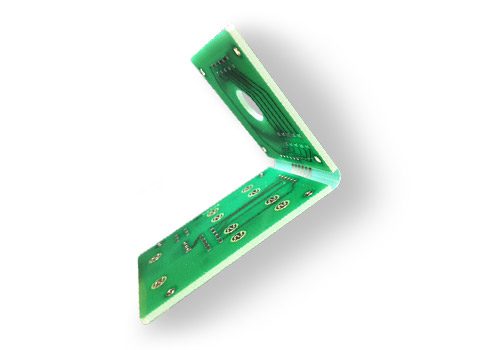Pure FR4 Rigid-Flex Technology | Design and Manufacturing Benefits | Application Areas | Material Properties | Quality Standards
Pure FR4 Rigid-Flex PCBs – Reliable Integration of Rigid and Flexible Areas
A variation of normal rigid-flexible printed circuits

is the "pure-FR4-rigid-flex". Here we ahve a standard rigid-flex with the same manufacturing process, except that the flexible part is replaced by a very thin FR4 core. This PCB is then still flexible enough for installations and performs better than semi-flex in this regard. This "pure-FR4-rigid-flex" allows smaller bending radius than semi-flex PCBs.
What are the advantages of pure-FR4-rigid-flex?
The big advantage compared to standard rigid-flex PCBs is the absence of Polyimide. This means that the whole board has a far lesser hygroscopic (absorbs less humidity) tendency, which is critical for some applications. Although the manufacturing process is almost identical to standard rigid-flexible boards, they are also slighty cheaper. This is due to the fact that pure FR4 stack-ups are easier to laminate than hybrid-stack-ups.
Roughly the following characteristics apply:
| dynamic bending performance | flex-to-install bending performance | costs | |
|---|---|---|---|
| semi-flex | none | fair | $ |
| pure-FR4-rigid-flex | none | good | $$$$ |
| rigid-flex | good | very good | $$$$$ |







